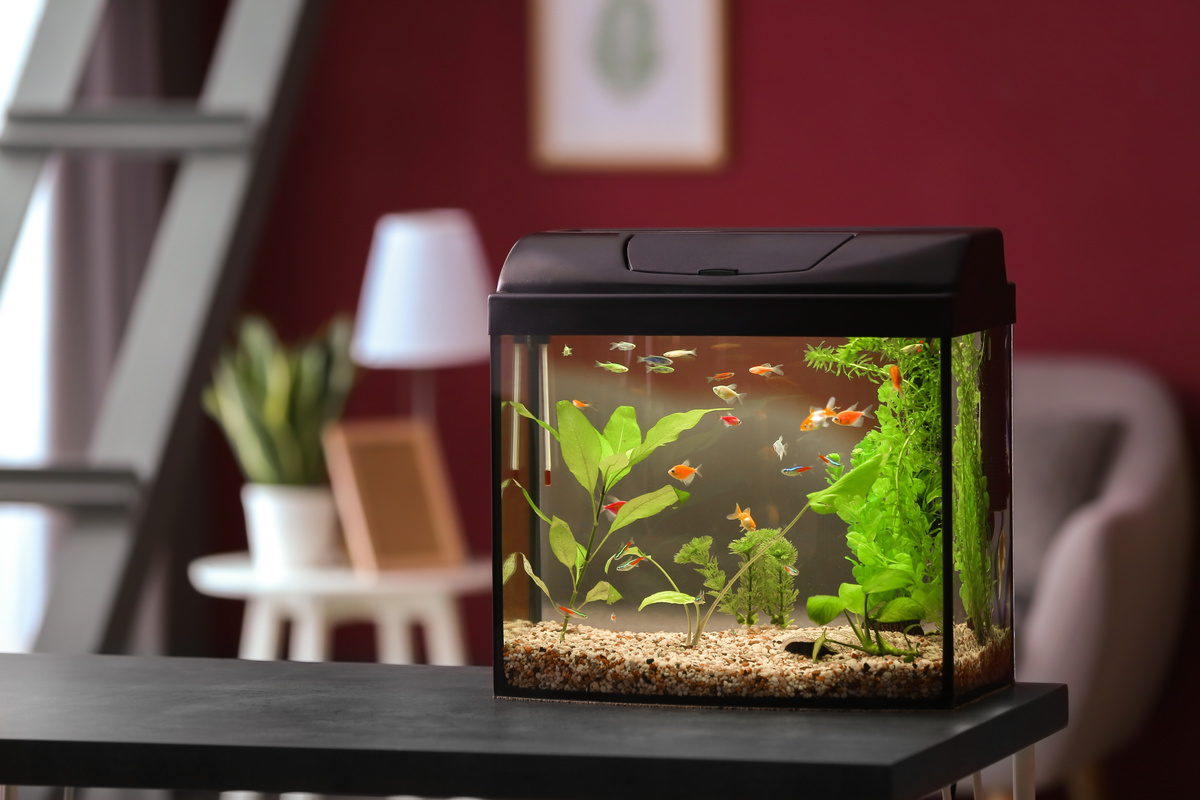Table of contents
什么是埃洛德亚植物?

榆叶梅是一种广泛用于装饰水族馆和人工湖的水生植物。 与许多人的想法相反,它们不是藻类!事实上,它们是被子植物,即它们属于植物王国。
此外,埃洛德是水族爱好者和那些想投资于一个美丽的、负担得起的和简化的装饰品的人的理想选择!他们相对容易繁殖,是建立你的水族箱的生物平衡的一个伟大的选择,无论是新的还是已经发展和成熟的。
这种植物很容易适应各种环境。 一般来说,它们通过分割茎或种植幼苗来繁殖。
了解更多关于精灵族的信息!我们走吧
鱼缸的功能

杜鹃花被广泛用于水族箱中,因为它生长迅速,对生活环境的条件要求不高。 如果你想用它来装饰你的水族箱,请了解一些拥有它的好处。 看看吧!
该工厂是鱼苗的庇护所
鱼苗是刚从卵中出来的鱼,已经吸收了胚胎阶段的卵黄囊。 这时,鱼离开了幼虫阶段,开始在水族箱的外部环境中觅食。
在这个阶段,小鱼有一个避难所是非常重要的,因为它们不习惯环境,需要保护,直到它们发育并感到完全安全。
除了保护之外,杜鹃花的叶子还能够喂养小鱼苗,因为孵化出来的小鱼苗可以吸收夹在植物结构中的微生物,为它们提供营养!
为你的水族馆美化环境
除了它们的实用功能外,Elodeas也是非常炫耀的,可以广泛用于装饰你的水族箱。
有几种类型的aquapaisagismo,如荷兰(Dutch)和自然水族馆,其中水族馆的植物群被很好地探索,是elode一个理想的植物来组成这种风格。
这些植物增殖很快,它们的维护也很简单,换句话说,通过修剪它们,你可以确定理想的尺寸和数量,以满足你的鱼缸的审美构成
繁殖杜鹃花的理想条件

尽管是一种容易适应的植物,但它对环境条件的灵活性提出了一些要求。 在这些要求中,有一些基本的因素可以使艾乐藻在你的水族箱中取得成功。 请看这些因素
这种植物的理想照明
良好的光照是杜鹃花茁壮成长不可或缺的。 建议有一个最佳的光照水平,从适度到强光。 如果你忽略了光照,植物的 "隐藏 "和内部叶片,得到的光照较少,会腐烂和脱落。
值得注意的是,建议安装适合水族的照明设备。 有一些限制条件,如绝不使用白炽灯和避免过量。 另一方面,也可以使用日常生活中常见的白色紧凑型荧光灯。
营养丰富的基质
另一个建议是植物的基质,即胚胎生长的基地。 它可以在惰性基质中生长,即营养水平最低。 然而,如果有肥沃的条件,胚胎生长得更快。
要为你的水族箱制作肥沃的基质,你可以购买现成的,也可以自己制作。 在第二种选择中,建议购买商业或自制的有机肥料,腐殖土和红土。
See_also: 金毛狗:特点、价格、护理等最后,在种植完杜鹃花后,你可以在上面铺上一层碎石。 这将使你的水族箱更有美感!
二氧化碳税
请记住,二氧化碳对任何植物都是必不可少的,因为它是光合作用的原料之一,而光合作用是植物获得食物的途径。
一般来说,鳗鱼草不需要注入二氧化碳,因为它们靠鱼本身通过呼吸的代谢活动呼出的二氧化碳生存。 小鱼产生的数量不多,但足以保证植物的生存。
在很少的二氧化碳条件下生存是使艾乐藻如此受欢迎的特点之一,因为适应水中稀释的气体极大地影响了水族箱内植物的繁荣。
还有其他水生植物也能适应很少的二氧化碳,如瓦利斯兰和卡邦巴。
其他关键参数
除了照明和基质,Elopods还有其他前提条件:pH值和温度。
一般来说,建议你的水族箱水的pH值在6和9之间,也就是说,不要太酸,也不要太碱!尽量保持中性或在指定的范围内。 为了使你的水族箱的pH值一直保持在这个范围内,有一些缓冲剂,在水族店可以找到,可以保持pH值稳定,没有变化。 试试吧!
至于温度,始终保持在10º和26º之间。 更低或更高的温度会损害和破坏水族箱中的动物和植物的稳定性。
小植物,大功能!

elode是水生植物的一个很好的选择!它们众多的品质加上容易栽培,使它们成为你的水族箱的理想选择。
在这里,你已经了解了更多关于这些在世界各地都能找到的世界性植物,并且深受水族爱好者的推崇。
同样重要的是,你要认识到它们在水生生物群落中的用途。 无论是在河流、湖泊,甚至在水族馆中,它们的存在可以保护鱼苗,为小鱼提供食物,或发挥美化环境的功能。
See_also: 牛肉有哪些部分? 请看牛肉的切割类型!而你,你还在等什么,在你的水族箱中采用elodeas?


